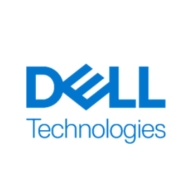

Moogsoft and Elastic Observability are two prominent players in the observability solutions category. Elastic Observability holds the upper hand due to its comprehensive features and robust data analysis capabilities, enhancing perceived value.
Features: Moogsoft offers proactive incident response, real-time insights, and effective collaboration tools. Its anomaly detection aids in swift identification of irregularities. Elastic Observability features advanced analytics, customizable dashboards, and integrations that provide end-to-end visibility. Noteworthy are its extensive monitoring capabilities and powerful search functionalities.
Room for Improvement: Moogsoft needs to improve update frequency and align better with cloud functionalities, addressing specific in-house hosting concerns. Enhancements in deployment updates and feature expansion would benefit Elastic Observability. Elastic's interface could be more intuitive for users unfamiliar with its setup, and streamlining its complex initial setup can improve user adoption. For both, simplifying integration processes would enhance user-friendliness.
Ease of Deployment and Customer Service: Moogsoft is noted for its straightforward deployment process and responsive support, which improves user experience. Elastic Observability's setup is more complex, but it is bolstered by extensive documentation and strong community support, making it adaptable for larger infrastructures. Elastic's scalability offers benefits that counterbalance Moogsoft's more user-friendly deployment.
Pricing and ROI: Moogsoft provides competitive pricing with lower initial setup costs ensuring rapid return on investment through efficient incident management. Elastic Observability may have higher costs but justifies this with substantial ROI due to enhanced system insights and operational efficiency. While Moogsoft emphasizes cost-effectiveness, Elastic's pricing is aligned with the powerful features it delivers.
ROI depends on how we integrate our IT operations with Moogsoft, as it can reduce our workload, downtime, and resolution time effectively, ultimately delivering better solutions based on mean time to resolution.
Elastic support really struggles in complex situations to resolve issues.
Elastic Observability seems to have a good scale-out capability.
Elastic Observability would be easy in deployment in general for small scale, but when you deploy it at a really large scale, the complexity comes with the customizations.
What is not scalable for us is not on Elastic's side.
There are some bugs that come with each release, but they are keen always to build major versions and minor versions on time, including the CVE vulnerabilities to fix it.
It is very stable, and I would rate it ten out of ten based on my interaction with it.
Elastic Observability is really stable.
Sometimes Moogsoft experiences stability issues due to bugs or internal problems, leading to downtime.
For instance, if you have many error logs and want to create a rule with a custom query, such as triggering an alert for five errors in the last hour, all you need to do is open the AI bot, type this question, and it generates an Elastic query for you to use in your alert rules.
Some areas such as AI Ops still require data scientists to understand machine learning and AI, and it doesn't have a quick win with no-brainer use cases.
It lacked some capabilities when handling on-prem devices, like network observability, package flow analysis, and device performance data on the infrastructure side.
Introducing machine learning and AI features would enhance Moogsoft, streamlining IT operations, incident detection, and response management.
This is a part of the hidden cost that the customer understands.
The license is reasonably priced, however, the VMs where we host the solution are extremely expensive, making the overall cost in the public cloud high.
Elastic Observability is cost-efficient and provides all features in the enterprise license without asset-based licensing.
The most valuable feature is the integrated platform that allows customers to start from observability and expand into other areas like security, EDR solutions, etc.
the most valued feature of Elastic is its log analytics capabilities.
All the features that we use, such as monitoring, dashboarding, reporting, the possibility of alerting, and the way we index the data, are important.
Moogsoft offers various benefits, including incident response, reduced noise alert fatigue, increased availability and uptime, helping companies gain a better understanding of their IT environment, proactively addressing issues, and improving services.
| Product | Market Share (%) |
|---|---|
| Elastic Observability | 2.9% |
| Moogsoft | 0.9% |
| Other | 96.2% |


| Company Size | Count |
|---|---|
| Small Business | 8 |
| Midsize Enterprise | 4 |
| Large Enterprise | 16 |
| Company Size | Count |
|---|---|
| Small Business | 5 |
| Midsize Enterprise | 4 |
| Large Enterprise | 11 |
Elastic Observability offers a comprehensive suite for log analytics, application performance monitoring, and machine learning. It integrates seamlessly with platforms like Teams and Slack, enhancing data visualization and scalability for real-time insights.
Elastic Observability is designed to support production environments with features like logging, data collection, and infrastructure tracking. Centralized logging and powerful search functionalities make incident response and performance tracking efficient. Elastic APM and Kibana facilitate detailed data visualization, promoting rapid troubleshooting and effective system performance analysis. Integrated services and extensive connectivity options enhance its role in business and technical decision-making by providing actionable data insights.
What are the most important features of Elastic Observability?Elastic Observability is employed across industries for critical operations, such as in finance for transaction monitoring, in healthcare for secure data management, and in technology for optimizing application performance. Its data-driven approach aids efficient event tracing, supporting diverse industry requirements.
Moogsoft is an AI-based solution that ensures continuous availability and prevents downtime by utilizing machine learning and advanced correlation on your organization’s stack. Moogsoft detects incidents before they can escalate, notifies the proper response teams, and applies machine learning in order to understand patterns to help prevent similar issues in the future.
Moogsoft sits on top of an organization’s production stack and extends across automation, service management, log indexing, and notification tools. Algorithmic Noise Reduction automatically reduces event volumes to unique alerts without relying on rules, filters, or models. This enables teams to analyze all monitoring ecosystem events with no noise and no blind spots.
With Moogsoft extensive integration options, users can aggregate all their observable data into a single location and create automated workflows to detect and remediate incidents in third-party systems, ensuring their system remains unharmed. Moogsoft’s anomaly detection tools detect incidents as they emerge, allowing security teams to respond swiftly before they impact customers.
Teams can easily set up their own integrations using Moogsoft’s REST API and webhook. The solution provides guidance for each step, allowing users to import data from whatever tool they need with just a few mouse clicks.
Some of Moogsoft’s top features and benefits include:
Reviews from Real Users
Moogsoft stands out among its competitors for a number of reasons. A few major ones are its monitoring tools, its user-friendly interface, and its strong AI capabilities.
Vivek S., an O&M Lead at a communications service provider, writes, “The most valuable feature is the monitoring manager. Different components and different monitoring tools integrate with and send data to Moogsoft.
This is a user-friendly solution. It is very easy and very comfortable to use, with everything available on a single screen.
The AI component allows you to check previous cases and diagnose problems easily. It will show you what happened last time the same event occurred.”
We monitor all IT Infrastructure Monitoring reviews to prevent fraudulent reviews and keep review quality high. We do not post reviews by company employees or direct competitors. We validate each review for authenticity via cross-reference with LinkedIn, and personal follow-up with the reviewer when necessary.